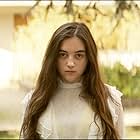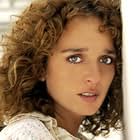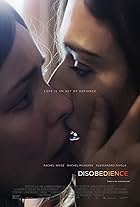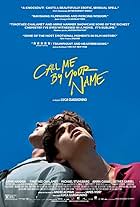On an isolated island in Brittany at the end of the eighteenth century, a female painter is obliged to paint a wedding portrait of a young woman.On an isolated island in Brittany at the end of the eighteenth century, a female painter is obliged to paint a wedding portrait of a young woman.On an isolated island in Brittany at the end of the eighteenth century, a female painter is obliged to paint a wedding portrait of a young woman.
- Nominated for 1 BAFTA Award
- 59 wins & 156 nominations total
- Director
- Writer
- All cast & crew
- Production, box office & more at IMDbPro
Featured reviews
10Camoo
I haven't written a review in a while because frankly there haven't been too many great movies in recent years to warrant any. But then I watched Portrait de la jeune fille en feu, and found it so revelatory and refreshing that I thought I would add my dollop of daisy to the ocean of praise this film has rightfully been getting.
The film is about a love affair between a painter and her subject, both women, and in a sense it is as simple as that. There is a backdrop of male dominance overhanging the period in which the story is set - the film contains few men, and when they are seen, they appear as benevolent figures. But repression pervades each scene - the subject of the painting is an aristocratic woman who is on her way to be married, and yet she isn't thrilled at the prospect and she might not have a choice in the matter. The painter, a young woman, at the end of the film displays her work under the name of her father, unable to present her work under her own name. So the specter of control is injected throughout, although this theme is only hinted at. This subtle touch gives the film an essential underpinning to what is otherwise a beautiful love story.
Some thoughts about the film-making. First: what a beautiful thing to behold. Such refined artistry is a rarity in the days of quick-consumption digital, and it goes to show how the technicians that work behind the camera are as important as what is happening on screen. Each frame is a thing of aesthetic delight, of color coordination, of subtle lighting and design elements all married into a whole. The fact that it was shot in digital rather than a traditional film look for a period piece somehow heightens and modernizes the proceedings in a way that made its most visual moments feel fresh and completely new.
Second, the respect for the audience, to not settle for petty narrative cliches when there were so many opportunities in this story to resort to them. It is one of these very pure and true stories, told with love and respect for the characters as well as those watching them breathe, yet we keep waiting for a moment of emotional violence between the main players, which doesn't occur. When I became aware of how delicate this story was as it unfolded to its end, I was moved to my core.
This is a revolutionary and passionate film on many levels, and I believe those who have seen it can only attest to that. It kind of defies criticism beyond that fact.
The film is about a love affair between a painter and her subject, both women, and in a sense it is as simple as that. There is a backdrop of male dominance overhanging the period in which the story is set - the film contains few men, and when they are seen, they appear as benevolent figures. But repression pervades each scene - the subject of the painting is an aristocratic woman who is on her way to be married, and yet she isn't thrilled at the prospect and she might not have a choice in the matter. The painter, a young woman, at the end of the film displays her work under the name of her father, unable to present her work under her own name. So the specter of control is injected throughout, although this theme is only hinted at. This subtle touch gives the film an essential underpinning to what is otherwise a beautiful love story.
Some thoughts about the film-making. First: what a beautiful thing to behold. Such refined artistry is a rarity in the days of quick-consumption digital, and it goes to show how the technicians that work behind the camera are as important as what is happening on screen. Each frame is a thing of aesthetic delight, of color coordination, of subtle lighting and design elements all married into a whole. The fact that it was shot in digital rather than a traditional film look for a period piece somehow heightens and modernizes the proceedings in a way that made its most visual moments feel fresh and completely new.
Second, the respect for the audience, to not settle for petty narrative cliches when there were so many opportunities in this story to resort to them. It is one of these very pure and true stories, told with love and respect for the characters as well as those watching them breathe, yet we keep waiting for a moment of emotional violence between the main players, which doesn't occur. When I became aware of how delicate this story was as it unfolded to its end, I was moved to my core.
This is a revolutionary and passionate film on many levels, and I believe those who have seen it can only attest to that. It kind of defies criticism beyond that fact.
Whole movie is a piece of art. The development of the action is slow, as is the painting process. As with the picture, this film takes shape towards the end. It's a movie about love between a painter and her muse. I loved how much the gaze meant in this film. Citing the myth of Orpheus and Eurydice is not accidental. This outlines the characters. Marianne as Orpheus makes the decision of the poet, she chose a memory of Héloise. She goes to the Opera to see her beloved. She states that Héloise has not seen her. I think Héloïse felt her presence, but she did not look around, she makes a lover's decision.
To understand the beauty of that movie, you need to watch it. It might be boring film in the beginning, but it shows how real is it. Beautiful scenes, shots. I loved the landscape of the sea. The best part of it is also how art connects with the whole plot, story. There is no background soundtrack. The music becomes an important part of the story. Speaking about melodies and painting, two main characters are in fact speaking about themself. Héloise asks Marianne when she knows that she finished the painting, Marianne answers it and the same talks about their relation. There are many details that makes that movie even more beautiful.
To understand the beauty of that movie, you need to watch it. It might be boring film in the beginning, but it shows how real is it. Beautiful scenes, shots. I loved the landscape of the sea. The best part of it is also how art connects with the whole plot, story. There is no background soundtrack. The music becomes an important part of the story. Speaking about melodies and painting, two main characters are in fact speaking about themself. Héloise asks Marianne when she knows that she finished the painting, Marianne answers it and the same talks about their relation. There are many details that makes that movie even more beautiful.
"When you asked if I had known love. I could tell the answer was yes. And that it was now. "Marianne (Noemie Merlant)
No art form has struggled more to get the depiction of love just right than film. Portrait of a Lady on Fire gets it almost perfect, and it's Sapphic! All you modest types don't need to worry-writer director Celine Siamma stresses the longing and the dance of love much more than its physicality. Two young women spend most of this beautiful romance just getting to the first dance, and the journey is as exciting and anguishing as it was for us in those early years of exploring.
Late 18th century Marianne has been hired to paint young Heloise (Adele Haenel) for her wedding portrait. Not that you can't guess what is going to happen while the first portrait is being painted, but the film languishes long and deep on the glances between these two potential lovers. Those gazes encapsulate the truth of their affections and the high-mindedness of their intentions.
Perhaps the business of painting lends the ethereal quality to their love, which is born of the imagination and fleetingly put on canvas forever. It's just that the slow, loving pace of the camera and the conceit lend a mystery (Will they connect?) and a sweetness (how transforming love can be from a scowl to a smile).
The cinematography, especially of the rugged cliffs and the sea, is well-aligned with the power and danger of their tender love. Not even mother's (Valeira Golino) affection for her remote daughter pales next to the burgeoning passion of the leads.
Portrait of a Lady on Fire fiercely speaks to the fire, conventional or not, that can burn in all of us. Leave it to film to bring out the love in our hearts.
"To love pure and chaste from afar." Man of La Mancha
No art form has struggled more to get the depiction of love just right than film. Portrait of a Lady on Fire gets it almost perfect, and it's Sapphic! All you modest types don't need to worry-writer director Celine Siamma stresses the longing and the dance of love much more than its physicality. Two young women spend most of this beautiful romance just getting to the first dance, and the journey is as exciting and anguishing as it was for us in those early years of exploring.
Late 18th century Marianne has been hired to paint young Heloise (Adele Haenel) for her wedding portrait. Not that you can't guess what is going to happen while the first portrait is being painted, but the film languishes long and deep on the glances between these two potential lovers. Those gazes encapsulate the truth of their affections and the high-mindedness of their intentions.
Perhaps the business of painting lends the ethereal quality to their love, which is born of the imagination and fleetingly put on canvas forever. It's just that the slow, loving pace of the camera and the conceit lend a mystery (Will they connect?) and a sweetness (how transforming love can be from a scowl to a smile).
The cinematography, especially of the rugged cliffs and the sea, is well-aligned with the power and danger of their tender love. Not even mother's (Valeira Golino) affection for her remote daughter pales next to the burgeoning passion of the leads.
Portrait of a Lady on Fire fiercely speaks to the fire, conventional or not, that can burn in all of us. Leave it to film to bring out the love in our hearts.
"To love pure and chaste from afar." Man of La Mancha
Amazing cinematography and acting! Beautiful film! Minimal dialogue made up for with major body language and emotional expression.
I cannot recall the last time I watched a film that had me utterly mesmerised from the very start to the very end without a single interruption. Everything about this film is so lovingly crafted, from the nuanced and commanding central performances to the cinematography and subtly woven storyline - they all combine to produce a genuine piece of cinematic art. The lighting and palette drew inspiration from 18th century paintings, there are scenes in this film that will stay with me fore some time... and the slowly building inevitable climax to the story is heart achingly gratifying. An utterly original and beautiful instant classic that somehow didn't capture the attention of the Oscars Academy!
Did you know
- TriviaThe paintings by Marianne were all created by painter Hélène Delmaire, whom Noémie Merlant worked closely with to inform her character's perspectives and sight lines when painting.
- GoofsWhen the shipper boxes up the portrait to send to Italy, he uses wire nails. Wire nails weren't invented until the 1860s. He would have used cut nails.
- Crazy creditsThe film's title is only spoken at the beginning and does not appear on screen until almost the end of the credits.
- SoundtracksPortrait de la jeune fille en feu
(Bande originale du film)
Para One, Arthur Simonini
- How long is Portrait of a Lady on Fire?Powered by Alexa
- Does anyone knows what kind of herb the two women used to "fly" together on the bed? On their armpits?
- Listening to the French, I thought the formal "vous" was used every time, even in the most intimate scenes. Why would they not use the familiar "tu" in those scenes? Actually, I believe I heard the familiar exactly once: near the end, when Héloïse says "Turn around," it sounded like "Retourne-toi". I wish I could check the script! Is that really what she said?
- What are the words to the song the women want together near the him fire? Were they celebrating a festival day?
Details
- Release date
- Country of origin
- Official sites
- Languages
- Also known as
- Retrato de una mujer en llamas
- Filming locations
- Saint-Pierre Quiberon, Morbihan, France(beach and sea arch)
- Production companies
- See more company credits at IMDbPro
Box office
- Budget
- €4,860,000 (estimated)
- Gross US & Canada
- $3,759,854
- Opening weekend US & Canada
- $67,344
- Dec 8, 2019
- Gross worldwide
- $9,869,497
- Runtime2 hours 2 minutes
- Color
- Aspect ratio
- 1.85 : 1
Contribute to this page
Suggest an edit or add missing content



![Bande-annonce [OV]](https://m.media-amazon.com/images/M/MV5BZjlmYzk3NGEtOTM4ZS00MDQ1LTk5NjktZDIzYTg4NWNmN2VkXkEyXkFqcGdeQXRyYW5zY29kZS13b3JrZmxvdw@@._V1_QL75_UX500_CR0,0,500,281_.jpg)




























